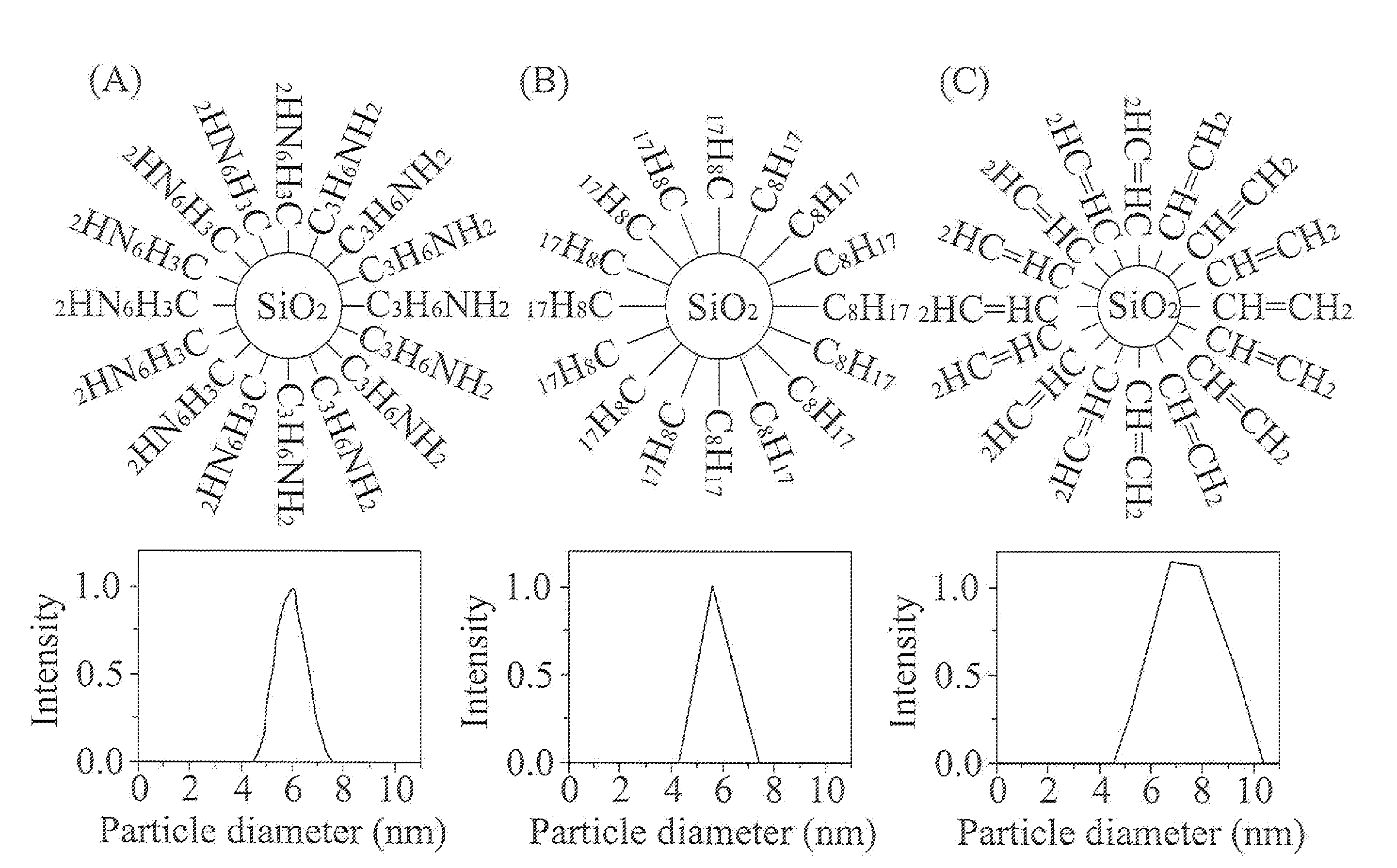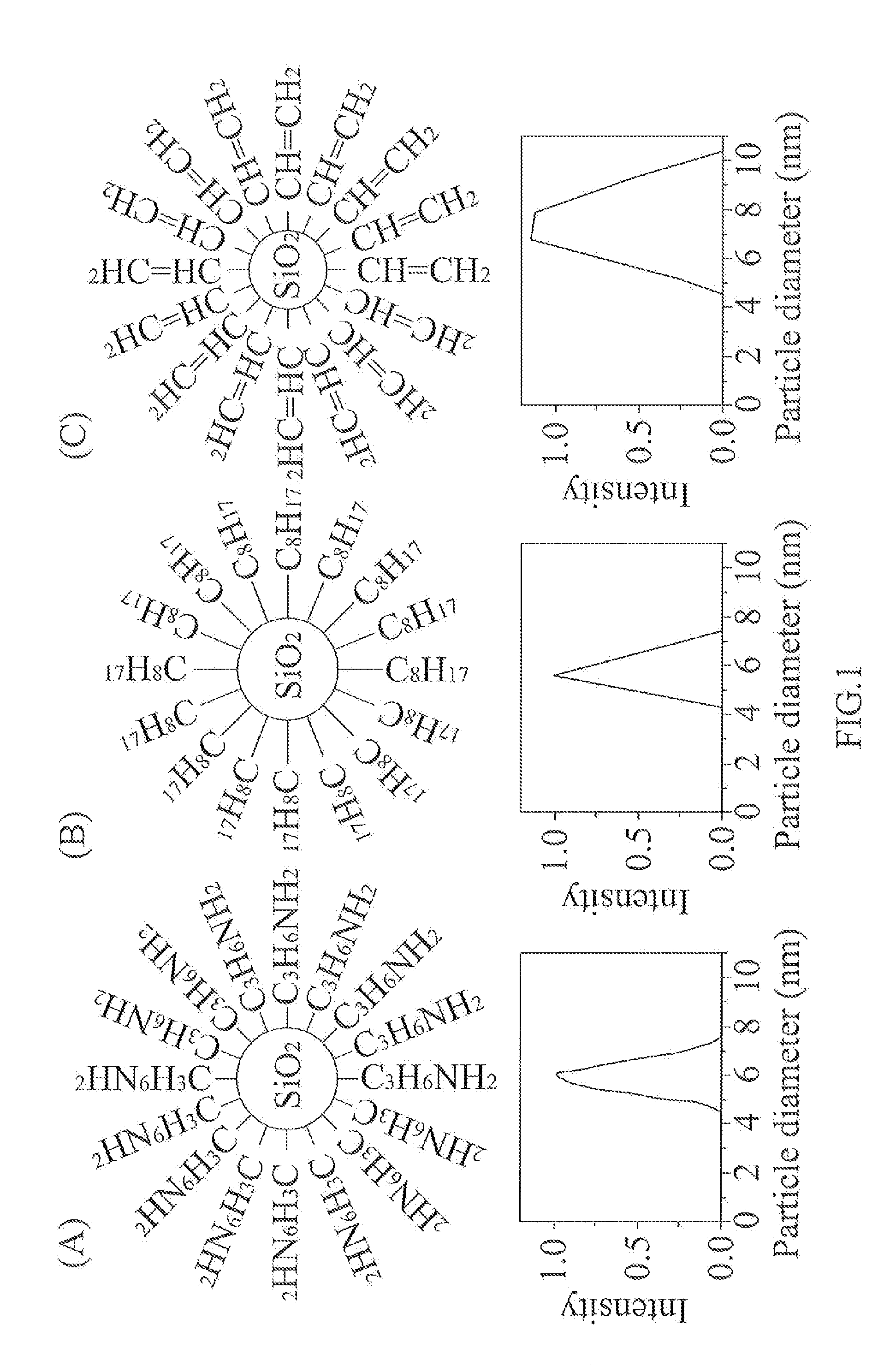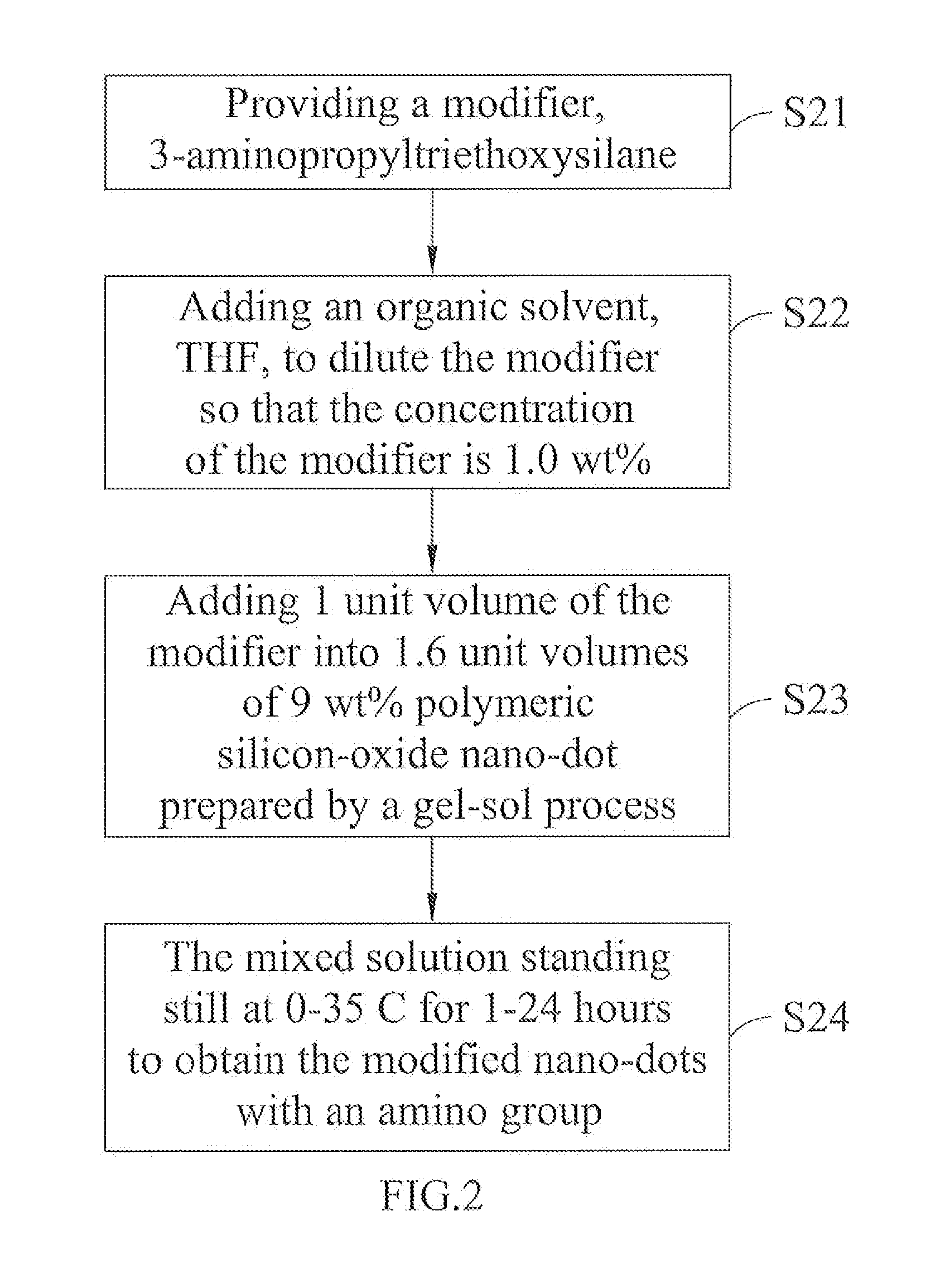Modified nano-dot, fabrication method thereof and composition element thereof
a technology of nano-dot and composition element, which is applied in the direction of electroluminescent light sources, chemistry apparatus and processes, and compositions. it can solve the problems of low electroluminescence efficiency, low efficiency devices, and limited practical applicability, so as to achieve favorable use, bright emission, and high surface charge
- Summary
- Abstract
- Description
- Claims
- Application Information
AI Technical Summary
Benefits of technology
Problems solved by technology
Method used
Image
Examples
Embodiment Construction
[0019]Referring to FIG. 1, there is shown a schematic illustration of the molecular structure of each type of modified nano-dots according to the present is invention. Also shown are the profiles of their particle size. In this figure, FIG. 1(A) illustrates a polymeric silicon-oxide nano-dot with 3-aminopropyltriethoxysilane on the surface. Its particle size is in the range of 4-8 nm. FIG. 1(B) illustrates a polymeric silicon-oxide nano-dot with n-octyltrimethoxysilane on the surface. Its particle size is in the range of 4-8 nm. FIG. 1(C) illustrates a polymeric silicon-oxide nano-dot with vinyltrimethoxysilane on the surface. Its particle size is in the range of 5-11 nm.
[0020]Referring to FIG. 2, there is shown a flow chart of a fabrication method of the modified nano-dot in FIG. 1(A). The steps are as follows: step S21, providing a modifier, 3-aminopropyltriethoxysilane; step S22, adding an organic solvent, tetrahydrofuran (THF), to dilute the modifier so that the weight percent c...
PUM
| Property | Measurement | Unit |
|---|---|---|
| particle size | aaaaa | aaaaa |
| particle size | aaaaa | aaaaa |
| particle size | aaaaa | aaaaa |
Abstract
Description
Claims
Application Information
 Login to View More
Login to View More - R&D
- Intellectual Property
- Life Sciences
- Materials
- Tech Scout
- Unparalleled Data Quality
- Higher Quality Content
- 60% Fewer Hallucinations
Browse by: Latest US Patents, China's latest patents, Technical Efficacy Thesaurus, Application Domain, Technology Topic, Popular Technical Reports.
© 2025 PatSnap. All rights reserved.Legal|Privacy policy|Modern Slavery Act Transparency Statement|Sitemap|About US| Contact US: help@patsnap.com



